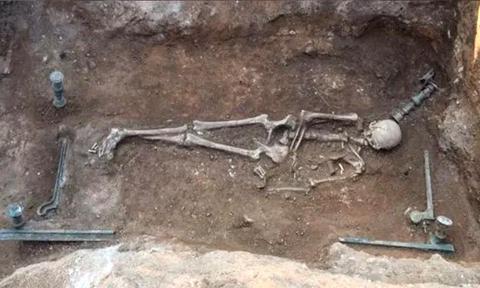
Even after thousands of years, there are still new and surprising things to discover about ancient Greek history. Archaeologists have recently unearthed the ancient burial site of a 2,100-year-old woman lying on a bronze bed near the city of Kozani in Northern Greece. According to the experts, the site dates back to first century BC.
Areti Chondrogianni-Metoki, the director of the Ephorate of Antiquities of Kozani, spoke to Live Science and revealed that the posts of the bed were decorated with depictions of mermaids. It also displayed an image of a bird holding a snake in its mouth, the symbol of the ancient Greek God Apollo. The wooden parts of the bed have already decomposed.
Chondrogianni-Metoki believes that this woman belonged to a royal family as her head was covered with gold laurel leaves that were likely a part of a wreath. Gold threads, possibly from embroidery of some kind, were also found on the woman’s hands. She was buried with four clay pots and a glass vessel, another sign indicating her belonging to a royal family.
This discovery is especially significant because not much is known about the history of Kozani. Chondrogianni-Metoki says that the only mention of the city in Greek history is for being situated near the important city of Mavropigi which housed a sanctuary dedicated to Apollo. Her discovery could potentially reveal a lot about the ancient burial customs of the region and the royal family.
This possibly royal woman could have witnessed historical events like the Romans destroying the city of Corinth in 146 BCE, or Julius Caesar’s army defeating a force led by Pompey, a victory that led to Caesar becoming the ruler of Rome.
Archaeologists are now working on determining the skeleton’s exact age, and the conditions that led to her death. Her remains are currently housed at the Archaeological Museum of Greece.
- Quick links
- history
- archaeology
- Archaeologists






